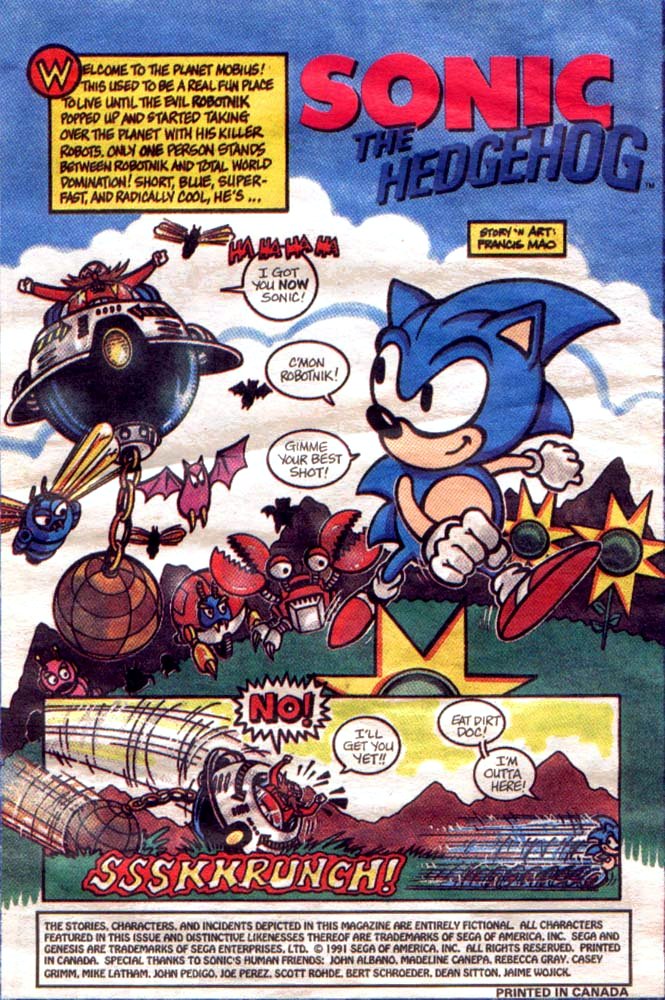
The most successful game-based comic of all time is, by and large, Archie's Sonic the Hedgehog. It's been around for over 15 years, has held onto a steady audience made up of several generations, and has kept characters introduced back in 1993 active within the fandom that would have otherwise been forgotten.
But if you want to get anal-retentive, the first Sonic Comic ever really made was the multi-page promotional ad that appeared in several magazines around the time of the first game's release in 1991.

According to this comic, Dr. Robotnik was once Dr. Kintobor ("Robotnik" backwards), a kindly scientist who aimed to rid Planet Mobius of evil by inventing a giant evil-sucking machine powered by the Chaos Emeralds. And Sonic was originally brown, like a proper hedgehog, but turned blue after he broke the sound barrier (on a treadmill). Sonic met Dr. Kintobor and prepared him a lunch consisting of one hard-boiled egg and a bottle of soda pop. But then Sonic spilled the soda onto the machine by accident and it broke and the evil escaped and went into Kintobor as he was holding the egg. He became Robotnik and immediately growled "I MUST DESTROY YOU....YOU WALKING PINCUSHION!!" The machine's inner workings were made of the golden rings, which were now scattered all over Mobius, and so your real goal in picking all those up was to rebuild the machine and turn Robotnik back into Kintobor. It was also implied that, by holding the egg as he got zapped, Robotnik had turned into an ACTUAL egg.
How many years did I assume that was the proper backstory behind the Sonic series? Don't ask.
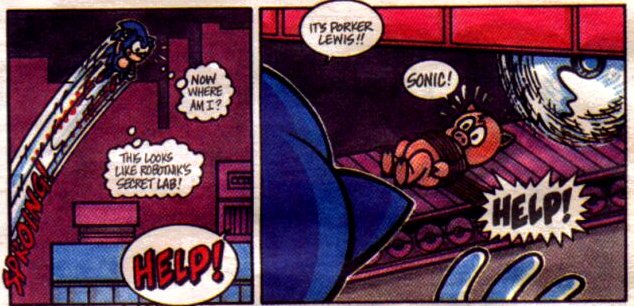
A character with the derivative name of "Porker Lewis," who apparently could lose, appeared in the promotional comic. There was no pig in the game, but there was one in the first-released drawings of a proposed Sonic TV series. This leads me to believe (though theoretically) that Sonic cartoons were in pre-production before the first game was ever released.
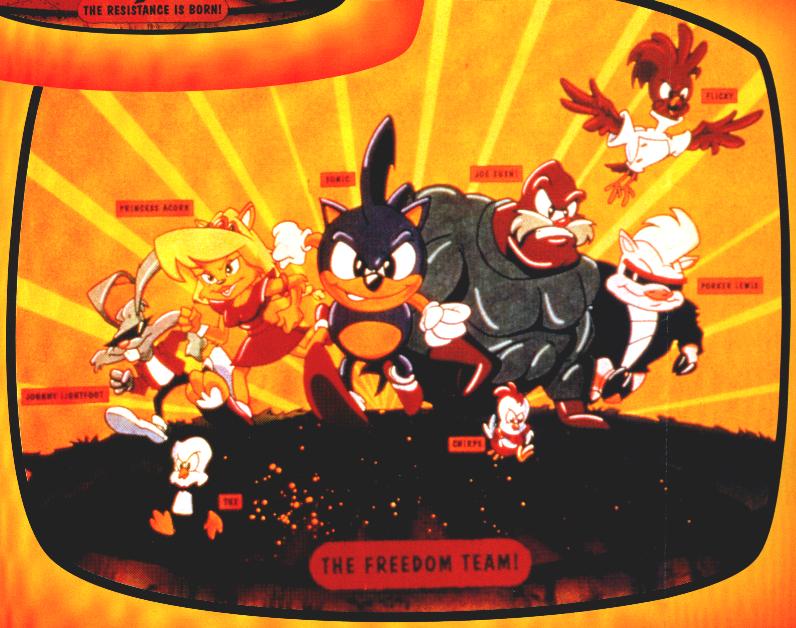
Taken from here. Left to right: "Johnny Lightfoot," "Tux," "Princess Acorn," Sonic, "Joe Sushi," "Chirps," "Porker Lewis," "Flicky." Don't look for Tails; this drawing is pre-Sonic 2.
When Archie became interested in creating a Sonic comic book, Sega gave them a peek at the characters they were developing for the show and suggested those characters be used. At this point, "Princess Acorn" was halfway between the barely recognizable sketch above and the final "Sally" character, and "Joe Sushi" had become "Boomer," which would later be changed to "Rotor." Many of the inital characters were gone and a few, like Antoine and Bunnie Rabbot, had replaced them. Bunnie, however, wouldn't be seen until a few months later. Maybe she hadn't been invented yet....
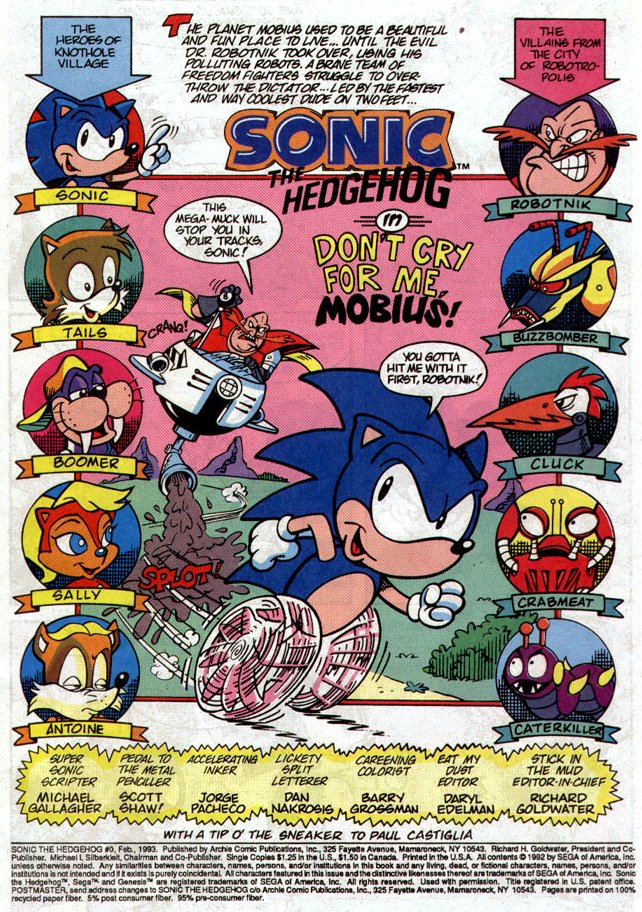
The "Sonic SatAM" characters were introduced to the world in comic book form nine months before they would appear on television. This has led some people to believe Sonic's Saturday Morning cartoon was based on Archie's version of his world, but the truth is the opposite.
This comic has been around so long, and developed such a huge history and character cast, I wasn't sure where to begin when talking about it. I finally decided I was going to have to pick an era and focus exclusively on that instead. Sorry, folks, but I want to write about the most hated period--the pun-filled original period, when the comic was under the assumption it would last three years at the most.
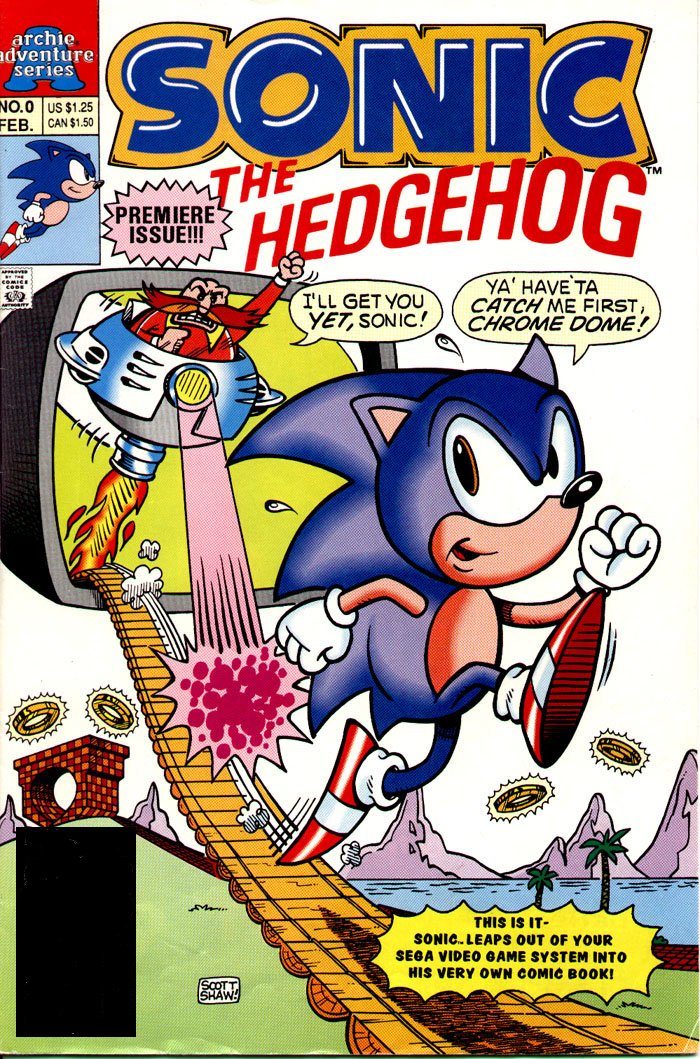
Sonic is one of the only comics to start with a Number Zero. An oddball number for an oddball comic drawn by Scott Shaw Exclamation Point. This was for his initial four-issue miniseries, which did well enough to persuade Archie to create an ongoing series. The series itself started with a proper #1.
Both the miniseries and the early years of the comic were considerably sillier than the rest, and you can blame writer Michael Gallagher for that. Gallagher's done a lot of things, but most notably (at least to me) he wrote every issue of the Alf comic book. It had to be the best Alf-oriented thing ever created, bursting with originality and cleverness. And when it ended, it ENDED--with a multi-part storyline concluded in a 48-page final issue, where instead of flashing back to all the stories he'd written, Gallagher flashed forward to tell about all the stories he might have written had the comic not been cancelled. It was all brilliant stuff.
One year after "Alf" ended Gallagher began writing for Sonic, but many of Gallagher's writing quirks fit Alf better. Gallagher is a huge Marx Brothers fan, and thus, a huge lover of puns. He's written some of the worst puns I've ever read, and that includes several lines in "Alf." Alf once said, "As they say in Key West, don't jump to CONCH-lusions!" The only way one could find that even remotely funny was if they already knew that section of Florida was famous for conch shells, and even then it's pretty bad. And Alf was in Africa when he said this.
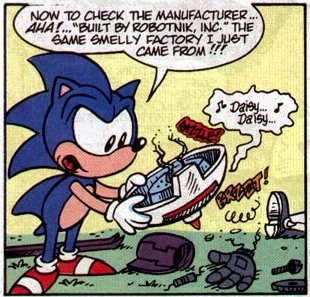
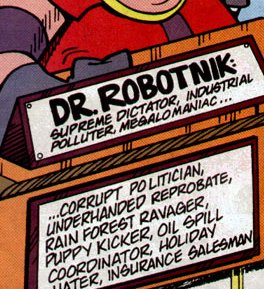
In addition to "Alf" Gallagher singlehandedly wrote half of Marvel's Star Comics line, and several of his trademarks became apparent--things that are repeated in Sonic. For instance, whenever a robot is destroyed in a Gallagher story, it has to sing "Daisy" a la Hal in 2001. Also, whenever there is a list of horrible things a man has done, that list must include "Insurance Salesman." Gallagher also loved using alternate spellings of popular comic sound effects: under his pencil "Click" became "Clique," "Crank" became "Cranq," and "Zoom" became "Zum" with a line above the "U" to indicate the long vowel sound.
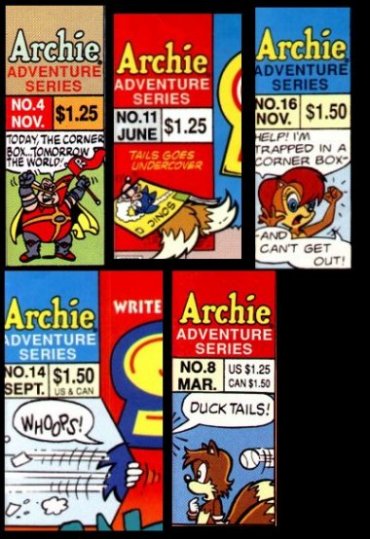
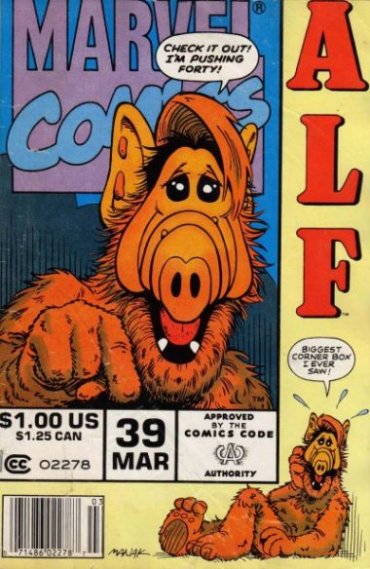
Gallagher also wrote the gags for the front covers, and he was writing the front-cover material for several issues of Sonic after he had stopped writing the interior. Another Gallagher Trademark™ was his love for corner boxes--those things comics used to use as quick identifiers when they were all squashed together on rotating drugstore racks. Normally the corner box was a static image of the comic's main character that stayed the same in every issue, but Gallagher created a different box for every issue of any cover he worked on. For Alf #39 he created the biggest corner box in comic book history, just because he could.
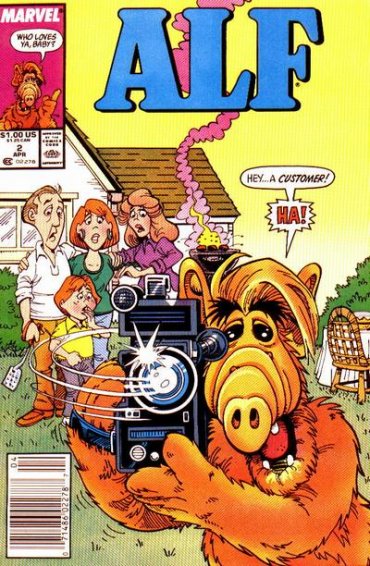
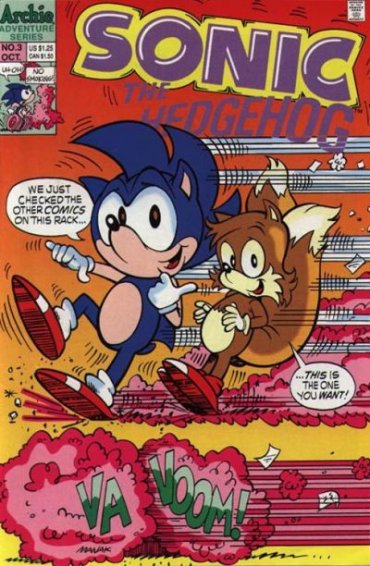
He was really fond of fourth-wall gags. The second issue of "Alf" had the alien facing the viewer and screaming, "HEY, A CUSTOMER!" Likewise, the third issue of Sonic features Sonic and Tails quickly checking every other comic book on the rack to make sure theirs is the best one.
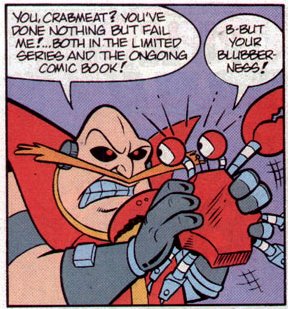
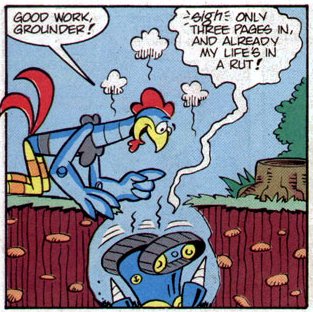
During the Gallagher years, the characters frequently mentioned they were in a comic book and not only that, they referenced other comic books as well.
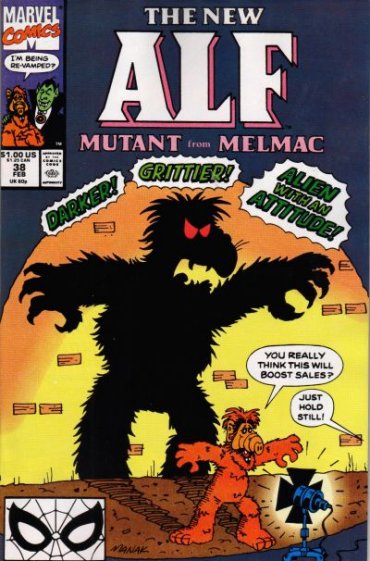
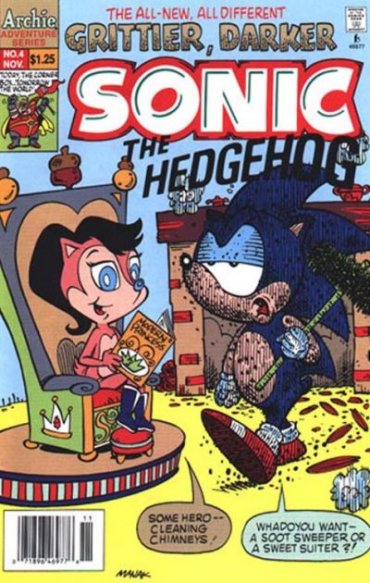
You wouldn't think the "Darker! Grittier!" trend of the 90's would be joked upon by Sonic or Alf, but that's what happened. One of Robotnik's many robots Sonic had to fight was the "Spawnmower," which was easily defeated because it had to stop and make a dramatic pose every ten seconds.
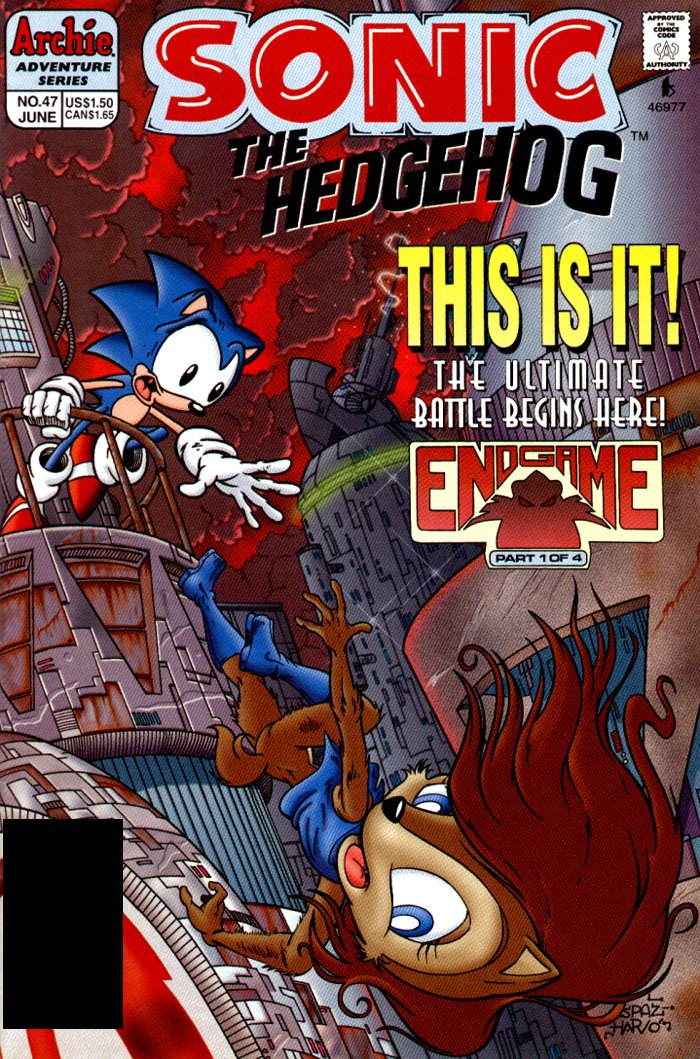
The Gallagher Era began fading once the Sonic comic became successful enough to support super-specials and spinoffs, and more writers were brought in, among them Ken Penders, who would become synoymous with the Sonic Comic for the next ten years. Gallagher's pun system was gradually pushed out and Penders' continuous soap opera format became the comic's permanent form. Nowhere was the difference clearer than in "Endgame," Sonic's first ultra-dramatic story in which Princess Sally appeared to bite the dust. Penders had planned to actually make her death permanent, but after being drowned in "Save Sally" plead-mail, he resurrected her at the end of the story.
Penders has now left as well, but Sonic the Hedgehog is still speeding along, with no signs of tiring out anytime soon. Gallagher now only writes for Sonic occasionally, when the editors want a throwback-style story or two.